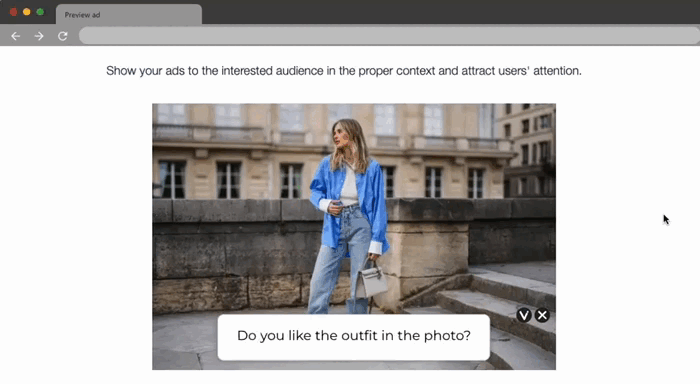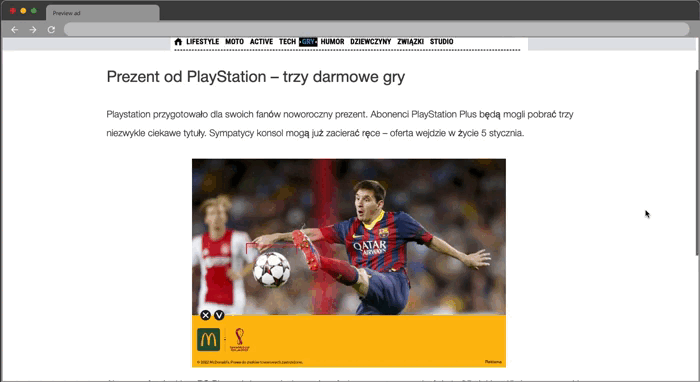Traditional advertising methods are being redefined in the evolving landscape of digital marketing. Non-standard ad formats, enriched by Contextual AI and Computer Vision algorithms, are at the forefront of this transformation, offering brands innovative avenues to engage consumers more effectively.
Conventional formats such as standard banners and pop-ups often fall short of grabbing user attention in today’s content-rich environment. Non-standard ad formats, with their distinctive designs and interactive nature, have proven to be strong tools for driving user engagement. These formats diverge from traditional norms, blending in with content to deliver a more engaging experience

‘WOW’ Effect- High-Impact Placements
Placing high-impact, non-standard ads in focal areas of a webpage maximizes visibility and user engagement. The ‘WOW Effect’ is delivered by special rich-media formats that break out of standard image boundaries, engaging users more effectively. The WOW format, which is available for a range of ad types such as Stripe, Full, and Flip, utilizes dynamic features to drive stronger engagement and deliver top-performing metrics for brand campaigns.

Interactive ‘Touch’ Effect
The ‘Touch’ effect is an innovative feature that expands ad format to a full editorial image upon user interaction. This approach grabs attention and prolongs communication with the customer, offering additional space for information. Designed with interactive elements or embedded galleries, ‘Touch’ ads provide a richer user experience and encourage deeper engagement.

AI-Based Dynamic Creative Personalization
Leveraging AI for dynamic creative personalization allows advertisers to tailor creatives using information from product feeds. By analyzing the visual and description of objects within images, AI algorithms can automatically select and construct banners featuring up to five products that align with the content, enhancing relevance and user interest.

Object Detection and Creative Personalization
Advanced AI algorithms can recognize specific objects within photos and videos (up to 15,000 objects with deep categorization for enhanced targeting precision), activating ads when a particular object(s) are identified. Additionally, AI can assess attributes such as gender, approximate age, hair color, and attire, along with facial expressions, smiles, and situational context, allowing for even more refined creative personalization that resonates with the target audience.

The Role of Contextual AI and Computer Vision
Contextual AI and Computer Vision technologies are pivotal in analyzing and understanding the content where ads are placed. By examining keywords, topics, editorial images, etc., these technologies ensure that ads align with the context of the webpage, leading to more precise ad targeting. This alignment not only respects user privacy by not relying on personal data but also enhances the relevance and effectiveness of the advertisements.
Conclusion
The integration of non-standard ad formats with contextual advertising is redefining the digital advertising landscape. These advancements enable more personalized, engaging, and effective advertising strategies that resonate with consumers while respecting their privacy. As technology continues to evolve, embracing these innovative approaches will be crucial for brands aiming to connect meaningfully with their audiences.
(Views are personal)

















